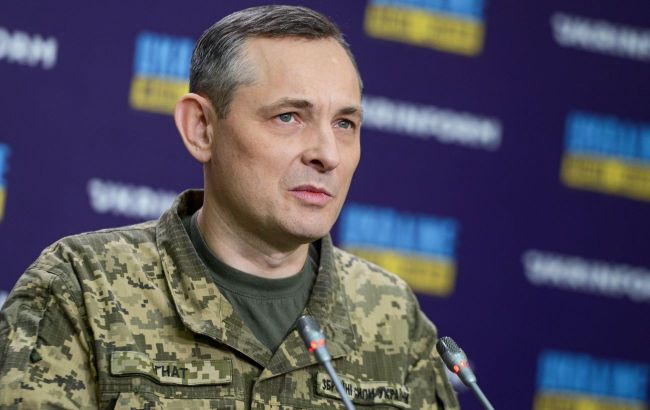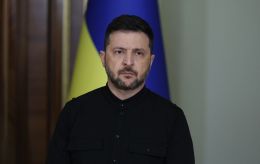Ukraine's Air Force reveals scale of Russia’s nighttime attack on Poltava
 Photo: Yurii Ihnat, head of the communications department of the Air Force Command of the Armed Forces of Ukraine (Getty Images)
Photo: Yurii Ihnat, head of the communications department of the Air Force Command of the Armed Forces of Ukraine (Getty Images)
During a combined enemy attack overnight, nearly all missiles targeted the Poltava region. Some were intercepted, but there were also confirmed strikes, according to Yurii Ihnat, head of the communications department of the Air Force Command of the Armed Forces of Ukraine.
"Almost all missiles were aimed at Poltava. These were various types of missiles in a combined strike, primarily directed at the gas extraction industry," Ihnat said.
He noted that this was not the first such attack on this region or others. Earlier, gas infrastructure facilities in Lviv and Ivano-Frankivsk regions were also targeted.
"The complexity lies in that ballistic, cruise, and guided aerial missiles are launched simultaneously, along with Shahed drones, making detection and interception significantly more difficult. The results are still being clarified and are not yet fully disclosed. Some missiles were intercepted, electronic warfare systems jammed some, but unfortunately, some hit their targets," Ihnat summarized.
Russia's overnight attack on Ukraine
Explosions were heard in the Poltava region overnight, with monitoring channels reporting missile launches toward the area. By morning, the region came under attack again.
According to Energy Minister Herman Halushchenko, Russia once again targeted Ukraine’s energy infrastructure, striking gas facilities overnight. As a result, emergency power outages were implemented across multiple regions.
As per the Ukrainian Air Force's morning report on February 11, Russia launched a coordinated strike using air-, ground--, and sea-launched missiles against gas extraction facilities in the Poltava region.
Naftogaz confirmed that its regional production facilities sustained damage, though no casualties were reported. Efforts are underway to stabilize the gas supply, as nine settlements in the Myrhorod district have been left without gas.
In total, Russia launched up to 19 cruise, ballistic, and guided aviation missiles in the attack. The effectiveness of Ukraine’s air defense response is still being assessed.
Additionally, Russia deployed 124 Shahed drones and other unmanned aerial vehicles (UAVs) overnight. Ukrainian forces managed to shoot down 57 drones, while 64 enemy decoy drones were lost on radar.
The attack heavily impacted the Poltava, Chernihiv, Kharkiv, and Cherkasy regions. In Cherkasy, two people were injured.
The Kyiv region also suffered blast wave damage. In the Boryspil district, a kindergarten and two school buildings (one active, one under construction) were damaged, with shattered windows, broken doors, and structural impacts. Additionally, a children’s playground and a private house sustained damage.

